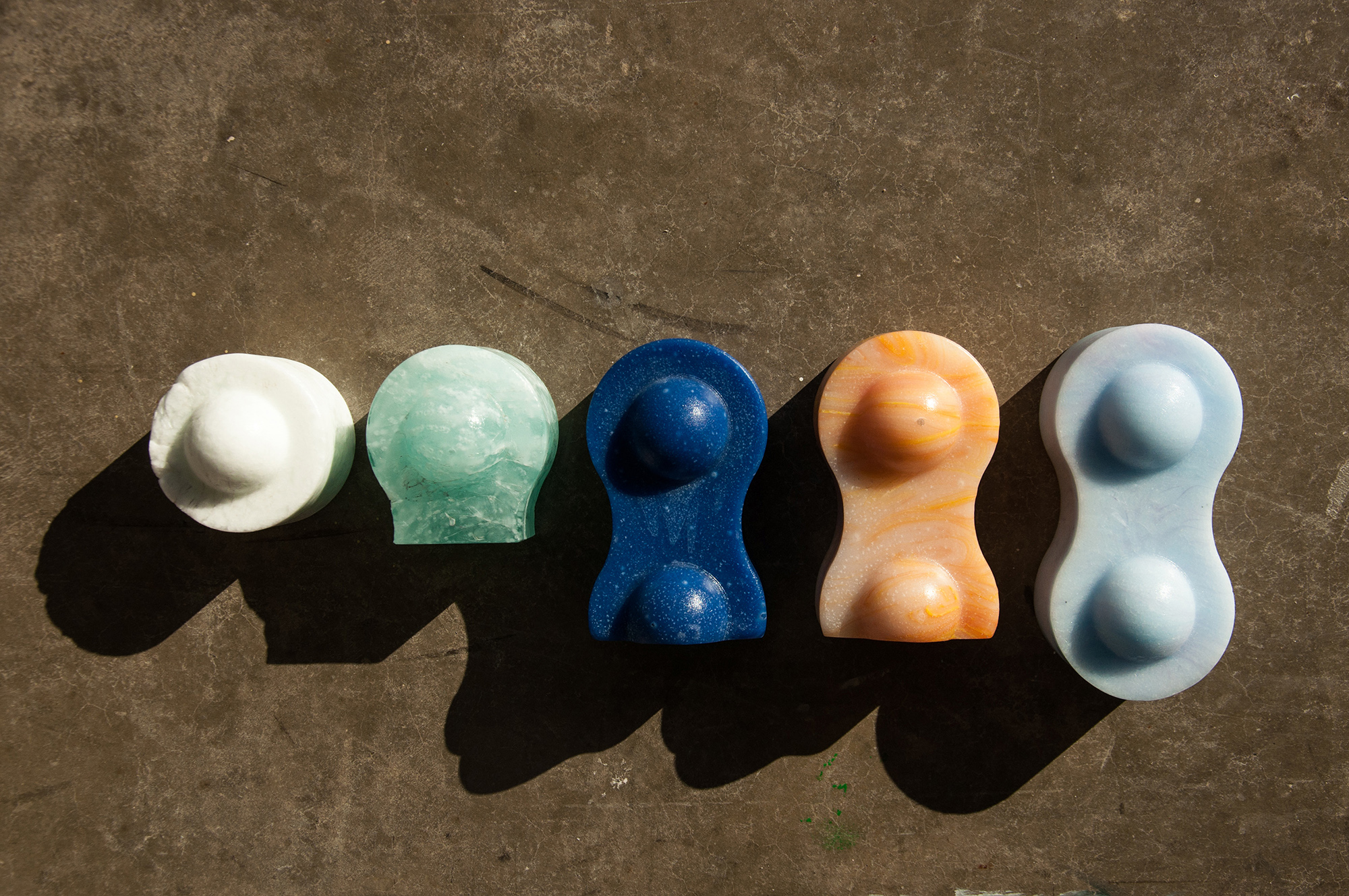A new generation of Recycable, Reducible and Reusable cast glass components for structural and architectural applications
Abstract
A spectacular glass brick system - developed to make the historic storefront of the Crystal Houses (Chanel store) in Amsterdam transparent - illustrates the great potential of cast glass blocks in structures. But it also reveals the need to make such constructions more sustainable. This project shows a novel, strong, circular and aesthetically pleasing building material from discarded glass, providing a solution for the problem of glass waste. Initially, different interlocking mechanisms and types of glass waste were explored. Then, physical prototypes were cast to experimentally evaluate their structural performance. The displayed glass bricks prove that glass is not only a 2D, transparent material. Instead, it can be a 3D component of unlimited shapes, colours, textures and opacity.

It is only in the last decades that the structural potential of glass has started to unveil. Combining transparency with a high compressive strength, glass enables us to make diaphanous load-bearing compressive members, from beams and columns to free-standing facades and entire glass structures. Although glass’ fabrication boundaries have been continuously stretching, so far, glass structures are still confined to the shapes and dimensions that can be realized by the virtually flat elements fabricated by the float industry. Moreover, despite the fact that glass is fully recyclable, the majority of glass objects are neither reused nor recycled, mainly due to contamination from coatings and adhesives.
Cast glass can escape the design limitations generated from the 2-dimensional nature of float glass. By pouring molten glass into moulds, solid 3-dimensional glass components can be obtained of virtually any shape and cross-section.


Owing to their large cross-sectional area and monolithic nature, such components can form repetitive units for the construction of 3-dimensional, free-form glass structures that do not buckle due to slender proportions, taking full advantage of glass’s high compressive strength and sparing the necessity of an additional supporting structure. The Crystal Houses façade in Amsterdam, designed by MVRDV and developed by the TU Delft Glass & Transparency group, forms the current state-of-the-art in the field of architectural cast glass. The cast block façade, bonded by a rigid, colourless adhesive of virtually zero thickness, manifests the potential of cast glass in architecture but also points out the engineering challenges resulting from a permanent construction of extreme accuracy and intensive and meticulous labour.


Grasping this potential, the “Re3 Glass” project introduces a novel, reversible system comprising dry-assembled, interlocking cast glass components in respect to the waste hierarchy of Reduce, Reuse and Recycle.

Re3 Glass can tackle the challenges generated by the aforementioned system and enable the circular use of the glass components, through the following threefold Re3 approach.

Step 1. REcycle by employing waste glass
Although in theory glass can be endlessly remelted without loss in quality, in practice only a small percentage gets recycled, mainly by the float and packaging industry. Most of the discarded glass fails to pass the high quality standards of the prevailing glass industry -due to coatings, adhesives, other contaminants or incompatibility of the recipe- and ends up in the landfill. Employing discarded glass in cast components can be a way to reintroduce this waste to the supply chain. Cast glass units–due to their increased cross section– can tolerate a higher degree of impurities and thus can be produced by using waste glass as a raw source, without necessarily compromising their mechanical or aesthetical properties.

Step 2. REduce by implementing smart geometry
Smart geometry is implemented in the form of cavities and notches, to achieve lightweight yet strong components that reduce not only the required raw material but also the overall embodied energy.

Step 3. REuse by designing interlocking components
Through an interlocking geometry, the proposed system can attain the desired stiffness and stability with the aid of minimal metal framing. Furthermore, the new system circumvents the use of adhesives by using a dry, colourless interlayer as an intermediate between the glass units. Besides preventing stress concentrations due to glass to glass contact, the dry interlayer can also accommodate the inevitable dimensional tolerances in the cast units’ size. Most important, a dry interlayer allows for a reversible glass system and for the circular use of the components.

To validate the concept, different component geometries have been developed and kilncast by the Glass & Transparency Group of TU Delft and assessed in terms of mechanical interlocking capacity, mass distribution and ease of fabrication. The structural performance of the interlocking components is validated by both numerical models and physical testing of the kilncast prototypes.

Different materials, (e.g. PVB, PU) and production methods for the dry, transparent interlayer have also been experimentally assessed. Series of experiments on different glass types, from beer bottles and Pyrex® trays to mobile phone and computer screens, open new possibilities for the recycling of everyday glass waste into structural glass components.

Outcome of the “Re3 Glass” project is the new generation of REcyclable, REducible and REusable cast glass components, proposing an innovative and sustainable way of building with diaphanous structural components.
Design, Research & Development team
TU Delft (Faculty of Architecture and the Built Environment & Faculty of Civil Engineering and Geosciences)
Initiators: ir. Telesilla Bristogianni & ir. Faidra Oikonomopoulou
Research collaborators: ir. Lida Barou, Dr.ir. Fred Veer, Prof.ir. Rob Nijsse
MSc students: ir. Erwin Jacobs, Giulia Frigo
External collaborators
Prof. Jiyong Lee & Katherine Rutecki from Southern Illinois University (SIU), School of Art and Design
Acknowledgement
The initiation of this project has been funded by a 4TU.Bouw Lighthouse 2017 grant.
Photo credits: Faidra Oikonomopoulou. Except of photograph of the Crystal Houses façade by Daria Scagliola & Stijn Brakkee.
For further information please contact: t.bristogianni@tudelft.nl or f.oikonomopoulou@tudelft.nl.
References
Oikonomopoulou, F., Bristogianni, T., Barou, L., van Hees, R., Nijsse, R., Veer, F., Schellen, H., & van Schijndel, J. (2017). Restorative glass: reversible, discreet restoration using structural glass components. SPOOL, 4(2), 39-43. doi:10.7480/spool.2017.2.1925